THE KEY PERSON TO YOUR WELLBEING IS YOU
WELLBEING PRODUCTS ONLINE 24/7 https://partner.co/s/MGE4NmQyNDAy
We have offered suggestions in the form of videos that you may find helpful in achieving Wellness in your Life and style choices & personal wellbeing needs .
we hope you will both enjoy and find the subject matters beneficial to your own personal wellbeing.
*THINGS THAT MATTERS TO YOU !
HAPPY BIRTHDAY TO THE CHANNEL
IM 62 & STILL LOOK LIKE 35
- Physical Activity and Nutrition
- Overweight and Obesity
- Tobacco
- Substance Abuse
- HIV/AIDS
- Mental Health
- Injury and Violence
- Environmental Quality
- Immunization
- Access to Health Care
Physical Activity and Nutrition
Research indicates that staying physically active can help prevent or delay certain diseases, including some cancers, heart disease and diabetes, and also relieve depression and improve mood. Inactivity often accompanies advancing age, but it doesn't have to.
RELATIONSHIP & LOVE SUGGESTIONS
foster a strong love and relationship, prioritize open, honest communication and active listening, but also maintain your individuality by having your own hobbies and friends. Show appreciation, never take your partner for granted, and remember that a healthy relationship requires both partners' effort and compromise. Be honest about your desires, avoid comparing your relationship to others', and pay attention to your partner's actions to ensure they align with their words
JAMAICAN HERBAL LIFE
Arthritis
Is there a Cure for this Widespread Condition with Profound Life Impact?
Arthritis, a frequently underestimated condition, has the potential to significantly alter the lives of those affected by it. It stands as the leading cause of disability in the United States, with its global burden growing at an alarming rate. Arthritis, marked by joint inflammation and stiffness, knows no age boundaries, impacting both the young and the elderly. While traditionapharmaceutical treatments
WHAT IS MEASLES ?
Cleveland Clinichttps://my.clevelandclinic.org › diseases › 8584-measlesMeasles is a highly contagious disease that causes a high fever, rash, cough and red eyes. It can lead to life-threatening complications, like brain ...
https://partner.co/?custid=N4475403
Exploring Sauna & Steam Room
The sauna and steam room “improve circulation, lower blood pressure, reduce stress, clear congestion, promote skin health, aid in workout recovery, loosen
Swimming, Sauna and Steam Session.
Workouts to reduce blood pressure
It is a comprehensive guide that teaches individuals how to reduce their blood pressure by implementing simple and risk-free techniques. It aims to deal with the issue by targeting the condition's root cause.
The creator, Christian Goodman, claims that the program's strategies stimulate an individual's body to acquire a 'focused break.' The exclusive break aids in reducing chronic strain, anxiety, or tension that an individual may have, thus balancing blood pressure levels.
The guide stresses three efficient exercises that are simple and basic. Hence, anybody can undertake them irrespective of age, gender, well-being, or fitness.
The workouts are essential in lowering blood pressure levels and require an individual to spare at least 9 minutes each day. They are expected to see improvements within a few weeks of utilizing the program.
The program does not require people to adhere to strict and tedious diets—the exercises aid patients in dealing with the related symptoms and eliminating the root cause of the blood pressure. Hence individuals will never need to be strict to diets or medications which may have adverse side effects.
How Does the Blood Pressure Program Work?
Studies reveal that most health professionals do realize the cause of HBP. They mostly associate the condition with being overweight and taking excess salt, smoking, or excessive alcohol. So, most prescribe wrong drugs to hypertension patients, which may have side effects. They also suggest diet modifications that may be ineffective.
Why The Blood Pressure Program is Useful?
- it is a completely natural system, and it is a 100 percent safe without any side effects.
- It has a healthier life because, at the end of the day, normal blood pressure is life-extending.
- With this program, you can erase all the worry that hypertension could bring into your life.
- The Blood Pressure Program review proves that you will learn how it would feel to put on that blood pressure cuff and have a natural, normal reading.
- It only uses safe, naturally effective tricks.
- There are no side effects because everything is natural in this program.
HOW TO USE HAIR PRODUCTS FOR MEN TO ACHIEVE HEALTHIER HAIR

Achieving healthier hair for men starts with using the right hair products. Many guys overlook the importance of proper hair care, but it can make a significant difference in appearance and overall hair health. Choosing quality hair products tailored to your specific hair type and concerns is crucial for maintaining strong, vibrant locks.
Men’s hair products come in various forms, including shampoos, conditioners, styling gels, pomades, and serums. Each serves a unique purpose in promoting hair health and achieving desired styles. For instance, moisturizing shampoos and conditioners help combat dryness and prevent breakage, while styling products like gels and pastes provide hold and texture.
When selecting hair products, consider factors such as your hair texture, scalp condition, and any specific issues you want to address. Quality hair products for men by Try Spartan offer solutions for different hair types and concerns, from thinning hair to beard growth. By incorporating the right products into your grooming routine, you can enhance your hair’s appearance and health while achieving your desired style.
EXPLORING FIBER AND ITS ROLE IN HEALTH

Fiber, often dubbed nature’s broom, plays a mahoosive role in maintaining our health. But, despite this, many of us remain in the dark about its true benefits and how to incorporate it into our daily routines.
Let’s embark on a journey to unravel the mysteries of fiber, explore the best sources to include in our meals, and discover how this powerhouse nutrient can enhance our wellbeing in more ways than we might expect.
Your Unsung Hero Of Nutrition
Fiber, also known as roughage or bulk, is a component of plant-based foods that our bodies can’t digest or absorb. Unlike other nutrients that are broken down and absorbed, fiber passes relatively intact through our digestive system.
Soluble vs. Insoluble Fiber
Fiber is like your digestive system’s best friend—it keeps everything running smoothly while offering some surprising health perks. But not all fiber is the same!
8 WAYS INPATIENT MENTAL HEALTH PROGRAMS FOSTER LONG-TERM WELLNESS

In an era where mental health is gaining recognition as a core component of well-being, inpatient mental health programs play a pivotal role for individuals facing severe psychological challenges. These structured environments help patients address their conditions intensively, providing them with the tools and support they need to pave the way toward sustainable wellness. Understanding how these programs foster resilience and recovery can transform how we approach mental health care.
Comprehensive Assessment And Personalized Care Plans
One of the cornerstones of inpatient mental health programs is the comprehensive assessment conducted upon admission. This evaluation often includes a thorough psychiatric assessment, physical health check, and evaluation of social factors. By taking a holistic approach, clinicians can craft a personalized care plan tailored to the individual’s specific needs. This plan outlines targeted goals and evidence-based interventions that not only address the immediate symptoms but also consider long-term recovery strategies.
HOW TO MAINTAIN STRONG TEETH AND GUMS IN RETIREMENT

Good oral health is essential at any age, but it becomes even more important as you get older. In countries like Canada, where healthcare is a priority, many seniors still face challenges in accessing proper dental care. As people age, they are more likely to experience common dental issues such as gum disease, tooth decay, and dry mouth. These problems can lead to discomfort, difficulty eating, and even serious health conditions like heart disease and diabetes.
Taking care of your teeth and gums in retirement doesn’t have to be complicated. With the right habits, regular dental visits, and a focus on a healthy diet, seniors can maintain strong teeth and avoid painful dental issues. Unfortunately, many retirees neglect dental care due to financial concerns or lack of awareness about available support programs.
If you are in retirement or approaching it, this guide will help you understand the best ways to keep your teeth and gums healthy. Small changes in your daily routine can make a big difference, ensuring that you can enjoy a strong, pain-free smile for years to come.
WELLBEING NEWS & VIEWS
VISIT OUR STORE
https://partner.co/s/MGE4NmQyNDAyWe
believe in your potential to thrive in health and purpose. That’s why we combine science-backed products with a powerful business model, giving you the tools to take charge of your well-being and future
WHAT MATTERS TO YOU MOST IN LIFE !
https://www.viveura.com/archive/what-matters
We have listed the sorts of issues that people are facing when they get in touch with us below. But, we know there are many more reasons that might make someone want to leave home.
- Relationship problems.
- Work, money and debt issues.
- Mental health issues, including feeling suicidal.
- Home not being safe – this could include domestic abuse or harassment.
- Being in poor, unsuitable accommodation.
- Pressure, threats or intimidation from others.
Feeling Trap
Wellbeing Moments
SYMPTOMS OF BLOOD CLOTS
Hope you find this information helpful
Blood clots
- throbbing or cramping pain, swelling, redness and warmth in a leg or arm.
- sudden breathlessness, sharp chest pain (may be worse when you breathe in) and a cough or coughing up blood.
- Subscibe to our supplements & wellness website below.
- Message us with your thoughts nonisolutionsmarketing@mail.com
NEWCROSS HOSPITAL INSPIRES
What Is Self-Actualization? Meaning, Theory + Examples
What Is Self-Actualization? Meaning, Theory + Examples
5 May 2017 by Joaquín Selva, Bc.S., Psychologist Scientifically reviewed by Jo Nash, Ph.D.
 The concept of self-actualization was brought into the mainstream by Abraham Maslow when he introduced his “hierarchy of needs.”
The concept of self-actualization was brought into the mainstream by Abraham Maslow when he introduced his “hierarchy of needs.”
Today, self-actualization is a bit more widely known, but most psychology students still learn of it as the top level of Maslow’s pyramid.
This article will define self-actualization, review the relevant research on self-actualization, and discuss its relevance to the positive psychology movement and to the average person.
Before you continue, we thought you might like to download our three Self-Compassion Exercises for free. These detailed, science-based exercises will not only help you increase the compassion and kindness you show yourself but will also give you the tools to help your clients, students, or employees show more compassion to themselves.
This Article Contains
- What is Self-Actualization? A Definition
- Abraham Maslow
- The Theory of Self-Actualization and the Hierarchy of Needs
- Examples of Self-Actualization
- Self-Actualization and Positive Psychology
- A Take-Home Message
- Frequently Asked Quetsions
- References
What is Self-Actualization? A Definition
Although self-actualization is most often associated with Maslow, the term was first coined by Kurt Goldstein. Goldstein characterized self-actualization as an individuation, or process of becoming a “self,” that is holistic (i.e., the individual realizes that one’s self and one’s environment are two pieces of a greater whole) and acts as a primary driving force of behavior in humans (Whitehead, 2017).
Although Goldstein’s concept didn’t get much traction at the time, it was popularized when Maslow adopted it into his theory on the human hierarchy of needs. In his seminal paper about human motivation (in which he first introduced his hierarchy of needs), Maslow discussed self-actualization by stating, “What a man can be, he must be. This need we may call self-actualization” (Maslow, 1943).
Self-actualization has also been described as:
the psychological process aimed at maximizing the use of a person’s abilities and resources. This process may vary from one person to another
(Couture et al., 2007).
In other words, self-actualization can generally be thought of as the full realization of one’s creative, intellectual, and social potential through internal drive (versus for external rewards like money, status, or power).
Since self-actualization is based on leveraging one’s abilities to reach their potential, it is a very individual process and will probably vary significantly from person to person. This focus on individual motivations is a key part of Maslow’s work, and what he felt differentiated it from the contemporary motivational psychology.
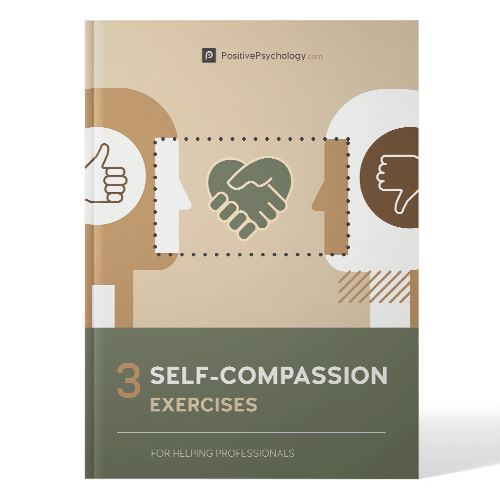
Download 3 Free Self-Compassion Exercises (PDF)
These detailed, science-based exercises will equip you to help others create a kinder and more nurturing relationship with themselves.
Abraham Maslow
As you may already know, Abraham Maslow was a prominent psychologist most known for his contributions to humanistic psychology. His interests in human motivation and self-actualization stemmed from his experiences both early on as a timid child, and later on as a father witnessing the horrors of World War II (Frick, 2000; Hoffman, 2008).
His hierarchy of needs–first introduced over 70 years ago–is still taught as a critical part of motivational psychology. In fact, there is a noticeable overlap between Maslow’s work and the work that underpins positive psychology (Goud, 2008); the emphasis on self-growth and self-development has a decidedly “positive” flavor to it.
The Theory of Self-Actualization and the Hierarchy of Needs
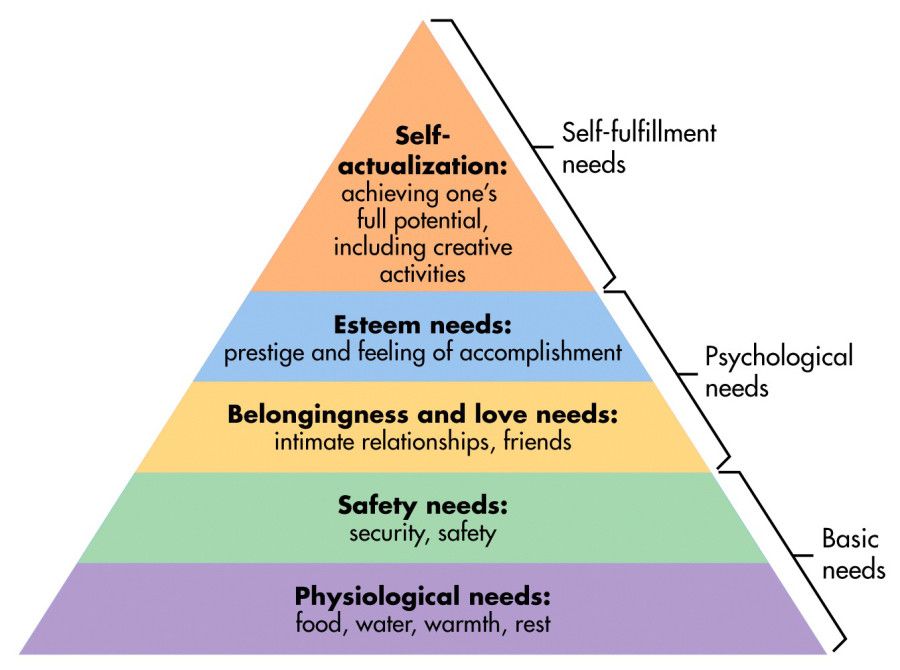
www.nonisolutions.com
Positive Affirmation For Wellbeing
An ideal selection of relaxing audio check it out.
SEXUAL HEALTH
This video explain the importance of a healthy sex life and what we can do to keep your sexual health alive In a safe and enjoyable way.
Bath Fountain St Thomas Jamacia Rated 🌟🌟🌟🌟
Legend has it that the bath was discovered in the 1600s by a runaway slave with leg ulcers. He stumbled across the spring, used it to wash his wounded limb then noticed the next day that his leg was
rapidly healing. the contents in the water are lime, sulphur and magnesium and while the mineral concentrations are not as high as those found in the Milk River or Rockfort Mineral baths, it’s believed that the naturally-occurring high temperatures provide additional healing power.
WELLBEING ONLINE 24/7
Does child care make a difference to children’s development? Clarifying common assumptions about child care
Over 70% of children in Canada are in some kind of child care arrangement and this number is similar in other countries. Usually, children are placed in child care because both parents are working. However, sometimes, parents are advised by a professional to enroll their child in child care because this environment will promote their child’s development.
Parents have many questions about child care and we thought it would be helpful to identify some common assumptions about the effects of child care and report on what the research actually shows. The first few assumptions relate to typically-developing children, and the final three assumptions relate to children with special needs.
Assumptions about typically-developing children and child care
Children who attend child care have better outcomes than children who are cared for at home by their mothers
FALSE
A study by the National Institute of Child Health and Human Development (NICHD) in the US looked at the influence of both child care and the home environment on over 1,000 typically-developing children [1]. They found that:
- "children who were cared for exclusively by their mothers did not develop differently than those who were also cared for by others" [1, p.1]
They also found that
- "parent and family characteristics were more strongly linked to child development than were child care features" [1, p.1].
This means that families have a greater impact on how a child develops than child care does.
Two family features that had a significant influence on children’s development were the quality of:
- mother-child interactions – children’s outcomes were better when mothers were responsive, sensitive, attentive, and provided good stimulation during interactions.
- the family environment – families which had organized routines, books and play materials, and engaged in stimulating experiences both in and out of the home (outings, library trips, etc.) had children with better social and cognitive outcomes.
The take home message...
Children who attend child care have the same outcomes as children who are cared for at home.
Children who attend child care have the same outcomes as children who are cared for at home. Whether a child attends daycare or not, it is the family that has a major impact on their child’s development, with the parents’ interactions with the child being a critically important factor.
Child care centres are better for children’s development than home-based child care settings
TRUE and FALSE
The NICHD study [1] compared children who attended child care centres with children who attended home-based care (e.g. a home-based daycare, or care within the child’s home by someone other than the child’s parents). They found that centre-based child care was linked to:
- somewhat better cognitive and language development
- better pre-academic skills involving letters and numbers
- fewer behaviour problems at ages 2 and 3
- more behaviour problems at age 4 ½ (such as disobedience and aggression)
Therefore, there appear to be pros and cons to both centre-based and home-based child care settings.
Treatment information
Some of the principal treatments carried out by Mr Aji Raghu Ram at Spire include:
Ophthalmology
- Age-related macular degeneration treatmentSpire Cardiff Hospital
- Cataract removal surgerySpire Cardiff Hospital
- Eyelid cyst surgerySpire Cardiff Hospital
- Laser eye treatment (yag laser capsulotomy)Spire Cardiff Hospital
Other treatments
- Intravitreal injection for diabetic eye conditions
- Removal of cysts - minor eyelid surgery
New Cross Hospital is a hospital in the Heath Town district of Wolverhampton, West Midlands, England. It is located to the east of the city centre in Wednesfield and is managed by the Royal Wolverhampton NHS Trust.
History[edit]

The hospital has its origins in the local workhouse designed by Arthur Marshall; the foundation stone was laid by the chairman of the Board of Guardians in September 1900 and it opened in September 1903.[1] The design ensured that the workhouse had infirmary facilities in the north end of the site and the infirmary joined the National Health Service as the New Cross Hospital in 1948.[2]
The first phase of the modern hospital,[3] built by Alfred McAlpine, was completed in 1970.[4] It became the main acute general hospital for Wolverhampton when the Royal Hospitalclosed in June 1997.[5]
In October 2004 a Heart and Lung Centre costing £57 million was opened on the site, the United Kingdom's first purpose built specialist heart centre.[6] In November 2015 a new accident and emergency facility, built by Kier Group and costing £38 million,[7] opened at the hospital.[8]
At Spire Healthcare we offer a full range of treatments, tests and scans
Specialties
- Bones and joints
- Cosmetic surgery
- Eye surgery and treatments
- Heart treatments
- Men's health
- Urology
- Weight loss
- Women's health
Treatments
- Back surgery
- Breast enlargement
- Cataract removal surgery
- Gastric bypass surgery
- Hip replacement surgery
- Knee replacement
- Prostate surgery
Tests and scans
Services
Conditions and symptoms
- Cataracts
- Foot pain
- Hip pain
- Knee pain
- Osteoarthritis
- Rheumatoid arthritis
- Sciatica
- Spinal stenosis
- New Cross Hospital - secondary and tertiary services, maternity, Accident & Emergency, critical care and outpatients.
- West Park Hospital - rehabilitation inpatient and day care services, therapy services and outpatients.
- More than 20 Community sites - community services for children and adults, Walk in Centres and therapy and rehabilitation services.
- Cannock Chase Hospital – general surgery, orthopaedics, breast surgery, urology, dermatology, and medical day case investigations and treatment (including endoscopy).
The Trust has a comprehensive clinical service portfolio across community, secondary and tertiary services.
Our services are split into three divisions:
- Division 1 (Surgical Division)
- Expand
- Division 2 (Emergency & Medical Services Division)
- Expand
- Division 3 (Community, Children’s & Support Services Division)
- Expand
UK’s largest health research programme opens 29 new clinics in September
News – 12 September 2023Our Future Health, the UK’s largest health research programme, will launch clinic appointments in 29 new locations in September 2023, bringing the total to 113 clinics across the UK.

Four new mobile clinics will be based in supermarket car parks in Hounslow, Hyndburn, Waltham Forest and Watford.
Blood donors will be able to join Our Future Health through their regular blood donation appointment at additional NHS Blood and Transplant locations in Ashford, Beckenham, Birmingham, Bradford, Brighton, Bristol, Cornwall, Coventry, Exeter, Gloucester, Hull, Leeds, Liverpool, Northwich, Oxford, Plymouth, Reading, Slough, Solihull, Stoke, Surrey, Sutton Coldfield, Tunbridge Wells, Worcester, York.
Our Future Health aims to transform the prevention, detection and treatment of conditions such as dementia, cancer, diabetes, heart disease and stroke. With up to five million volunteers right across the UK, the goal is to create one of the most detailed pictures ever of people’s health.
At their clinic appointment, as well as having a blood sample and some physical measurements taken, volunteers will be offered information about their own health, including their blood pressure and cholesterol levels. In the future, volunteers will also be given the option to receive feedback about their risk of some diseases and have the opportunity to take part in cutting-edge research studies.
Working in collaboration with the NHS, the programme is sending invitations to people who live near the new clinics. Anyone over the age of 18 can join by signing up online at ourfuturehealth.org.uk, completing an online health questionnaire, and booking a short clinic appointment.
Our Future Health clinic locations can be viewed on an interactive map here.
Volunteer Gemma Gould, 34, from Coventry said:
“Getting my cholesterol and blood pressure checked during my Our Future Health appointment was reassuring. Taking part is quick, efficient and will help others in the future – a good reason for me to take a break from working and get out of the house!”
Dr Raghib Ali OBE, Chief Medical Officer at Our Future Health, said:
“In order to make discoveries about disease that benefit everyone, we need people from a range of different backgrounds to volunteer for Our Future Health. That’s why we want to make it easier than ever for people to take part, whether it’s at their high street pharmacy, in the car park of their local supermarket, or during their routine blood donation appointment.”
Photos and videos of the mobile clinics can be downloaded here.
Our Future Health is rolling out on a region-by-region basis to invite adults across the UK to join the programme. Volunteers who don’t live near a location where Our Future Health appointments are currently available can join now at ourfuturehealth.org.uk and be notified when new appointment locations become available.
New locations will be announced on the Our Future Health website and social media channels.
Mental health is a big issue for young people
- One in six children aged five to 16 were identified as having a probable mental health problem in July 2021, a huge increase from one in nine in 2017. That’s five children in every classroom (i).
- The number of A&E attendances by young people aged 18 or under with a recorded diagnosis of a psychiatric condition more than tripled between 2010 and 2018-19 (ii).
- 83% of young people with mental health needs agreed that the coronavirus pandemic had made their mental health worse (iii).
- In 2018-19, 24% of 17-year-olds reported having self-harmed in the previous year, and seven per cent reported having self-harmed with suicidal intent at some point in their lives. 16% reported high levels of psychological distress (iv).
- Suicide was the leading cause of death for males and females aged between five to 34 in 2019 (v).
- Nearly half of 17-19 year-olds with a diagnosable mental health disorder has self-harmed or attempted suicide at some point, rising to 52.7% for young women (vi).
1 in 6children aged five to 16 were identified as having a probable mental health problem in July 2020.
It has a big impact in adulthood
- One-third of mental health problems in adulthood are directly connected to an adverse childhood experience (ACE) (vii).
- Adults who experienced four or more adversities in their childhood are four times more likely to have low levels of mental wellbeing and life satisfaction (viii).
1 in 3mental health problems in adulthood are directly connected to an adverse childhood experience (ACE).
Young people need more support
- Just over one in three children and young people with a diagnosable mental health condition get access to NHS care and treatment (ix).
- In a YoungMinds survey, three-quarters (76%) of parents said that their child's mental health had deteriorated while waiting for support from Child and Adolescent Mental Health Services (CAMHS) (x).
- In a YoungMinds commissioned survey by Censuswide, two-thirds (67%) of young people said they would prefer to be able to access mental health support without going to see their GP but half (53%) said they didn't know how else to access this help (xi).
Just over 1 in 3children and young people with a diagnosable mental health condition get access to NHS care and treatment.
References
(i) NHS Digital (2021): 'Mental Health of Children and Young People in England 2021'.
(iii) YoungMinds (summer 2020) Coronavirus: Impact on young people with mental health needs (survey two).
(v) ONS: Deaths registered in England and Wales (2019) section six ‘Leading causes of death’.
(vi) NHS Digital (2018) ‘Mental Health of Children and Young People in England, 2017’. Based on 46.8% of 17 to 19-year-olds that were identified as having a diagnosable mental health condition reporting that they had harmed themselves or tried to kill themselves at some point
(vii) Kessler, R. (2010) ‘Childhood adversities and adult psychopathology in the WHO World Mental Health Surveys’ British Journal of Psychiatry 197(5): 378–385.
(ix) NHS Five Year Forward View for Mental Health dashboard.
(x) YoungMinds (2018) ‘A new era for young people’s mental health’.
UK Lifts Travel Advisory Against Jamaica
By: GARWIN DAVIS, October 10, 2021
THE KEY POINT:
The UK Foreign, Commonwealth & Development Office issued an update earlier today (Friday, October 8), removing COVID-19-related restrictions based on the current assessment of risks associated with the pandemic. ListenTourismShareFacebookTwitterWhatsAppEmail
THE FACTS
- TUI is the world’s leading tourism group. The broad portfolio gathered under the Group’s umbrella consists of strong tour operators, some 1,600 travel agencies, and leading online portals.
- “We, however,…and this is a word of caution…cannot sit on our laurels and allow ourselves to become complacent. We have come too far and have sacrificed too much to allow ourselves to become complacent. We need to continue to follow health and safety guidelines and to listen to the directives provided by the Ministry of Health and Wellness.”
Should drugs be decriminalised? Yes
Kailash Chand, general practitionerAuthor information Copyright and License information PMC Disclaimer
Recent government figures suggest that the UK drug treatment programmes have had limited success in rehabilitating drug users, leading to calls for decriminalisation from some parties. Kailash Chandbelieves that this is the best way to reduce the harm drugs cause, but Joseph Califano thinks not
There is a way that the UK government could more than halve the prison population, prevent burglaries and prostitution, rip the heart out of organised crime, and free up millions of hours of police time. Yet politicians, terrified of the rightwing press, would never dare to suggest the legalisation, regulation, and control of the drugs market, even though it could save lives and bring an end to the needless criminalisation of some of the most vulnerable members of our society. Even downgrading cannabis—a tiny step in the right direction—is now being reconsidered.
Prohibition drives crime
Prohibition as a policy has failed. Just look at the US, where hundreds of thousands of people have been jailed and, despite billions of pounds of funding for draconian policies, higher purity drugs continue to flood the market.
Many of the violent criminal gangs owe their existence to the burgeoning, underground drug market. It is they—and not the governments—who control this trade and it is their turf wars that fuel gun crime. Transform—an influential drug policy foundation that has campaigned against prohibition—reports that the annual trade controlled by the gangs is more than £100bn.1 It also points to the fact that the policy drives crime among desperate low income addicts.
You only have to walk through the UK's many red light districts to see the effect of heroin addiction. Young women, putting themselves at grave danger, as they sell their bodies in return for enough cash to fund their next hit. Then there are the prisons overflowing.2
Benefits of decriminalisation
Decriminalising drugs has paid off in the Netherlands. Decriminalisation of heroin and other hard drugs has allowed addicts to be treated as patients. As a result hardly any new heroin addicts are registered,3 while existing users are supported and have been helped to get jobs.
Drugs could easily be regulated in the same manner that alcohol and tobacco are regulated and, more importantly, heavily taxed. The price could still be substantially less than current prices on the illicit market,4 and the revenue generated from the regulation could then be funnelled into education and other rehabilitation programmes. Educating children at an early age is the best weapon we have to combat the drug problems we face today. It would give children the tools to make intelligent and healthy choices in the future. And instead of turning drug addicts back to the streets, investing in rehabilitation programmes would not only help the addicts, but help society.
Many people may think that taking drugs is inherently wrong and so should be illegal. But there is a question of effectiveness—does making it illegal stop people doing it? The answer is clearly no. One could even argue that legalisation would eliminate part of the attraction of taking drugs—the allure of doing something illegal.
‘I Wish I Had Known That No One Was Going to Help Me’
Adult children discuss the trials of caring for their aging parents: unreliable agencies, a lack of help and dwindling financial resources.
Natasha Lazartes
39, therapist, Brooklyn

It’s been a nightmare. They are so desperate to hire workers that they will take anyone.”
I am 39 years old. I had to care for my father, who passed from cancer in 2019; my mother, who passed in November 2021 from cancer; and since her passing I have inherited the care of my grandmother. She is 97, diagnosed with moderate dementia and is considered high risk to be left home alone. We had been applying for Medicaid long-term care to receive a home health aide since early November 2021. She finally got a home health aide in January 2022, but it’s been a nightmare. They are so desperate to hire workers that they will take anyone. She was left without an aide on many random days with a late-notice telephone call or text message from the aide needing the day off and the agencies not able to find a replacement in time. I have changed agencies multiple times. My husband has been a great support the entire time. We rely on security cameras we installed in our apartment to see how she is doing while we are at work. How is it on a daily basis? It is emotionally and physically draining. The health care system for the elderly is neglected, broken and inadequate to meet any demands, even the basic needs.
The Importance of Having a Support System
Benefits of reducing sugar intake
Research suggests that daily added-sugar intake for 90 percent of Americans regularly exceeds the Dietary Guidelines’ recommendation of no more than 10 percent of the total calorie intake (The American Heart Association suggests we limit added sugar to 24gms/day for women and 36gms/day for men). When we consume high amounts of sugar, we become more prone to developing diseases such as obesity, heart disease, diabetes, Alzheimer’s, depression and even some types of cancer.
Reducing or cutting out sugar can increase our quality of life no matter what our age or health status. This doesn’t mean we should cut out all forms of sugar. Natural sugars found in fruit, some dairy products, and vegetables, which also contain nutrients like fiber, vitamins and minerals, are not associated with the health risks mentioned above. In fact, they are considered very important parts of a healthy diet when consumed in the proper amounts.
Here are five things that can happen when you cut down on sugar:
- You might lose a few pounds. Your total calorie intake decreases as you eat foods without added sugars. One research study suggests this could be a possible 14 percent decrease in total calories, which may mean you could consume 210 fewer calories when based on a 1,500-calorie a day intake. Just by cutting down on your added sugar intake you could lose one to two pounds per month.
- You’ll decrease your diabetes risk. Cutting added sugars can help to keep your blood glucose levels within healthy parameters and makes it easier to control weight, both of which lower your diabetes risk. Added sugars contribute to excess calories, and excess calorie intake leads to weight gain. Weight gain, along with higher blood glucose levels from consuming added sugars, leads to insulin resistance. Cutting down on added sugars is key in stopping this cycle.
- You’ll curb your sugar cravings. When you take in sweet treats like cake, cookies or candy, your brain tells your body you’re not full, and you then have the urge to eat more to feel satisfied. Increased intake of sugary foods or beverages fuels the increased frequency of cravings. When consumption of sugary foods and beverages decrease, the brain stops telling the body that it needs more sugar to feed the sugar craving cycle.
- You can lower your risk for depression. Improved mental health is another advantage you might experience when you cut added sugar. This is because higher intakes of added sugar are associated with a significantly greater likelihood of experiencing episodes of depression, anxiety, and other mental health issues. Researchers think this stems from inflammation in the brain that is triggered by added sugar’s higher glycemic index, and that this occurs through added sugar intake and not from natural sugars or carbohydrates.
- You’ll have more energy. An increase in overall energy is one of the immediate perks you may notice when decreasing your added sugar intake. This is largely due to experiencing fewer highs and lows in your blood sugar.
Bonus tip! Want to know the quickest way to decrease added sugar intake? Look at the types of beverages you consume.
More than 50 percent of added sugar comes from sweetened beverages we consume – soda, energy/sports drinks, juices, and sweetened tea or coffees to name a few. Just by switching out sweetened beverages for their non-calorie counterparts, you may be able to cut your added sugar intake by more than half.
WOLVERHAMPTON YOUTH ZONE
ABOUT WOLVERHAMPTON YOUTH ZONE
Wolverhampton Youth Zone named ‘The Way’ opened in January 2016 and is a purpose-built facility for the city’s young people aged 8 – 19 (and 25 with disabilities).
The Youth Zone is located on Worcester Street in Wolverhampton and offers a multitude of activities for young people to partake in, such as sport, fitness, dance, arts, music, media, enterprise and well-being and self-improvement
The Youth Zone is crammed with incredible facilities that young people from Wolverhampton can access for a cost of £5 for an annual membership and 50p per visit. The Way Youth Zone provides a safe environment where young people can come and enjoy themselves, enabling young people to raise their aspirations and confidence, to create a happier and healthier generation.
Recovery is a personal journey with the goals of hope, empowerment and autonomy. And for many people with mental health challenges, recovery is often possible.
Many factors contribute to recovery, including having a good support system of people that you like, respect and trust. They can be family members, friends, teachers, faith leaders, neighbors or peers — what’s important is that you have people you feel comfortable talking to about what you’re experiencing and support you may need.
Research has shown that having a social support system can have a positive impact on your overall mental health, especially for women, older adults, patients, workers and students. On a scale of 1 to 10 where 10 was “a great deal of stress” and one is “little or no stress,” a 2015 survey found that the average stress level for people with emotional support in place was 5 out of 10 compared to 6.3 out of 10 for people without emotional support.
Having a few people you trust and can turn to can help you manage everyday challenges, make difficult decisions, or even during a crisis situation.
It can also combat social isolation and loneliness, both of which can put you at higher risk for physical and mental health issues including high blood pressure, a weakened immune system, anxiety, depression and more.
If you don’t have this right now, that’s okay. Use these tips from the American Psychological Association to help build and strengthen your support network:
- Reach out to family and friends. Simply saying hello or offering to help with a task can spark conversation.
- Use technology. Connect with people far away via email, text messaging or video calls.
- Connect with people who share your interests. Join a club, volunteer at a local organization or take a class to help meet people who share your likes and interests.
- Look for peer support groups. If you are facing a personal challenge, consider joining a peer support group to help take care of your mental health and connect with people who are facing something similar.
- Ask for help. Reach out to your local library, place of worship, or community center to learn more about local events you may want to attend or groups you may want to join.
Remember that everyone’s support system will look different. They can be anywhere from one to 10 people and include diverse people from different areas of your life. And they take time to build.
It’s also important to take care of your own mental health and well-being in the process. Use self-care strategies and tips from the Mental Health First Aid curriculum to take care of yourself while also building a network around you.
Stan’s story
Stan just found out that a friend has prostate cancer. Many men he knows have prostate problems. He’s worried that this might happen to him.
It’s true that prostate problems are common after age 50. The good news is there are many things you can do.
What is the prostate?
 The prostate is a small gland in men that helps make semen. Located just below the bladder in front of the rectum, it wraps around the tube that cacarries urine and semen out of the body. It tends to grow larger as you get older. If your prostate gets too large, it can cause a number of health issues.
The prostate is a small gland in men that helps make semen. Located just below the bladder in front of the rectum, it wraps around the tube that cacarries urine and semen out of the body. It tends to grow larger as you get older. If your prostate gets too large, it can cause a number of health issues.
Common problems
Here are some examples of non-cancer prostate problems:
Benign prostatic hyperplasia, or BPH, is very common in older men. It means your prostate is enlarged but not cancerous. Treatments for BPH include:
- Watchful waiting, also called active surveillance. If your symptoms are not too bad, your doctor may tell you to wait to see if they get worse before starting treatment. Your doctor will tell you how often to return for check-ups.
- Medications. Medicines can help shrink the prostate or relax muscles near your prostate to ease symptoms.
- Surgery. If nothing else has worked, your doctor may suggest surgery to help urine flow.
- Other treatments. Sometimes radio waves, microwaves, or lasers are used to treat urinary problems caused by BPH. These methods use different kinds of heat to reduce extra prostate tissue.
Acute bacterial prostatitis usually starts suddenly from a bacterial infection. See your doctor right away if you have fever, chills, or pain in addition to prostate symptoms. Most cases can be cured with antibiotics. You also may need medication to help with pain or discomfort.
Chronic bacterial prostatitis is an infection that comes back again and again. This rare problem can be hard to treat. Sometimes, taking antibiotics for a long time may work. Talk with your doctor about other things you can do to help you feel better.
Chronic prostatitis, also called chronic pelvic pain syndrome, is a common prostate problem. It can cause pain in the lower back, in the groin, or at the tip of the penis. Treatment may require a combination of medicines, surgery, and lifestyle changes.
Be sure to talk with your doctor about the possible side effects of treatment.
Symptoms of prostate problems
See your doctor right away if you have any of these symptoms:
- Frequent urge to urinate
- Need to get up many times during the night to urinate
- Blood in urine or semen
- Pain or burning urination
- Painful ejaculation
- Frequent pain or stiffness in lower back, hips, pelvic or rectal area, or upper thighs
- Dribbling of urine
Prostate cancer
Prostate cancer is common among American men. Your chance of getting prostate cancer may be affected by your:
- Age. Men age 50 and older run a greater risk.
- Race. Prostate cancer is most common among African American men, followed by Hispanic and Native American men. Asian American men have the lowest rates of prostate cancer.
- Family history. If your father or brother had prostate cancer, you are more likely to develop it, too.
- Diet. The risk of prostate cancer may be higher for men who eat high-fat diets.
Welcome to Places Leisure Wolverhampton Swimming and Fitness Centre
We’re passionate about helping you stay physically active and emotionally engaged in fitness, sport and wellbeing. Our mission is to put our heart and soul into ‘creating active places and healthy people’ - it’s about creating a place for everyone.
Email us: enquirieswolverhampton@pfpleisure.org
Glen Staite-Loveridge, General Manager
01902 384 777
The reality of being black in today’s Britain
This article is more than 6 years oldDavid Olusoga
David Olusoga at El Mina, a Portuguese-built fort in Ghana. ‘Many black British people, and their white and mixed-race family members, slipped into a siege mentality.’ Photograph: BBC
When I was a child, growing up on a council estate in the northeast of England, I imbibed enough of the background racial tensions of the late 1970s and 1980s to feel profoundly unwelcome in Britain.
My right, not just to regard myself as a British citizen, but even to be in Britain, seemed contested. Despite our mother’s careful protection, the tenor of our times seeped through the concrete walls into our home and into my mind and into my siblings’ minds. Secretly, I harboured fears that as part of the group identified by chanting neo-Nazis, hostile neighbours and even television comedians as “them” we might be sent “back”. This, in our case, presumably meant “back” to Nigeria, a country of which I had only infant memories and a land upon which my youngest siblings had never set foot.
To thousands of younger black and mixed-race Britons who, thankfully, cannot remember those decades, the racism of the 1970s and 1980s and the insecurities it bred in the minds of black people are difficult to imagine or relate to.
But they are powerful memories for my generation. I was eight years old when the BBC finally cancelled The Black and White Minstrel Show. I have memories of my mother rushing across our living room to change television channels (in the days before remote controls) to avoid her mixed-race children being confronted by grotesque caricatures of themselves on prime-time television. I was 17 when the last of the touring blackface minstrel shows finally disappeared, having clung on for a decade performing in fading ballrooms on the decaying piers of Britain’s seaside towns.
I grew up in a Britain in which there were pictures of golliwogs on jam jars and golliwog dolls alongside the teddy bears in the toy shop windows. One of the worst moments of my unhappy schooling was when, during the run-up to a 1970s Christmas, we were allowed to bring in our favourite toys. The girl who innocently brought her golliwog doll into our classroom plunged me into a day of humiliation and pain that I still find painful to recall, decades later.
When, in recent years, I have been assured that such dolls, and the words “golliwog” and “wog”, are in fact harmless and that opposition to them is a symptom of rampant political correctness, I recall another incident. It is difficult to regard a word as benign when it has been scrawled on to a note, wrapped around a brick and thrown through one’s living-room window in the dead of night, as happened to my family when I was 14. That scribbled note reiterated the demand that me and my siblings be sent “back”.
In the early 21st century, politicians in Whitehall and researchers in thinktanks fret about the failures of ethnic-minority communities to properly integrate into British society. In my childhood, the resistance seemed, to me at least, to come from the opposite direction. Many non-white people felt that while it was possible to be in Britain it was much harder to be of Britain. They felt marked out and unwanted whenever they left the confines of family or community.
Jamaican immigrants arriving at Tilbury Docks in Essex, 22 June 1948 on the Empire Windrush.Photograph: Daily Herald Archive/SSPL via Getty Images
It was a place and a time in which “black” meant “other” and “black” was unquestionably the opposite of “British”. The phrase “black British”, with which we are so familiar today, was little heard in those years. In the minds of some it spoke of an impossible duality. In the face of such hostility, many black British people, and their white and mixed-race family members, slipped into a siege mentality, a state of mind from which it has been difficult to entirely escape. What drove us deeper into that citadel of self-reliance and watchful mistrust was not just racial prejudice but a wave of racial violence.
Throughout those embattled years, my mother, somehow, managed to maintain within our family a regime of self-education and self-improvement. It was this internal, familial microculture that slowly drew me to read history. I stumbled upon the subject that was to become my vocation out of a simple love of story and because of a gung-ho fascination with the Second World War that was almost obligatory among boys of that period, whatever their racial background.
The racism that had so deeply affected our lives was given a historical context
Britain in the 1980s was a nation still saturated in the culture and paraphernalia of that conflict. For the white working-class community.
The ObserverRace This article is more than 6 years old
The reality of being black in today’s Britain & Globaly
Check this out https://fb.watch/omSUDVUni_/
News
Most black people in the UK face discrimination from healthcare staff, survey finds
Most black people living in the UK have experienced prejudice from healthcare professionals because of their ethnicity, with younger people feeling especially discriminated against, a survey has revealed.1
Almost two thirds (65%) of black people who responded to a survey said that they had experienced prejudice from doctors and other staff in healthcare settings. This rose to three quarters (75%) among black people aged 18 to 34.
The report was commissioned by the Black Equity Organisation, a national civil rights organisation launched earlier this year to tackle systemic racism in the UK. The survey received 2051 responses from people of black or mixed black ethnicity, including 1014 people aged 18 to 34.
Vivian Hunt, the organisation’s chair of trustees, said, “The key to change is identifying and recognising the reality of black communities across the country. This research and our other report, Brick Wall after Brick Wall, provides a clear picture of what black communities experience daily and will help shape our work and campaigns moving forward.
“We will work in partnership with communities, businesses, grassroots organisations, and allies to deliver systemic change that will ensure that these experiences become a thing of the past.”
The report cited particular issues around the experience of black women in maternity care and the diagnosis of certain special educational needs. Survey participants felt as though they were not seen and that their concerns were not listened to or incorporated into their treatment decisions.
“Specific to Black women, participants felt that due to the misguided stereotype of ‘strong Black women,’ practitioners were dismissive of their pain,” the report said.
It noted that this finding had also been reported by the NHS Race Health Observatory,2 which found evidence of negative interactions, stereotyping, disrespect, discrimination, and cultural insensitivity across maternity services. This made many women from ethnic minority groups feel “unwelcome, and poorly cared for.” It also found that black patients in the UK were subject to more intrusive treatments, such as injectable antipsychotics, and were less likely to be offered talking therapy for severe mental illness.
Black African individuals were at least six percentage points more likely than those from other ethnic groups to believe that they were being discriminated against by NHS professionals because of their ethnicity.
Honest conversation
Reflecting on its findings, the organisation called for an end to prejudicial decisions being made by healthcare professionals when treating and diagnosing illness in black patients.
References
- ↵Swords B, Sheni R. Systemic change required. Black lived reality: why we need systemic change. 26 Sep 2022. https://blackequityorg.com/state-of-black-britain-report/
- ↵Kapadia D, Zhang J, Salway S, et al; NHS Race & Health Observatory. Ethnic inequalities in healthcare: a rapid evidence review. Feb 2022. https://www.nhsrho.org/wp-content/uploads/2022/02/RHO-Rapid-Review-Final-Report_v.7.pdf
Need to re-order your contraceptive prescription?
You may be on a repeat prescription for the contraceptive pill. In which case, you can arrange for your prescription medication to be delivered to your house, or you can collect it for free from your local store with the LloydsPharmacy prescription delivery service. You will still have to have a quick online consultation with one of our online doctors to check suitability.
What are the signs and symptoms of STIs?
The signs of STIs and STDs vary depending on:
- the infection that you have
- the severity of it
- whether you're a man or a woman.
Many symptoms of STIs and STDs are very similar, for example you could notice pain when you urinate, discharge from your vagina or penis as well as itching or irritation.
Also it's important to remember that some of these infections are asymptotic meaning that you symptoms may not appear at all, or if they do they might not develop for weeks or months after you are initially infected. That’s why it’s important to get regularly tested for STIs and STDs, as well as practise safe sex by using condoms.
STI symptoms in women can range from unusual vaginal discharge that might be white, clear or greenish in appearance. Men may also notice discharge from the tip of the penis, this too might be yellow in colour and accompanied by itching and irritation.
Where can I get tested?
When you’re looking to get tested for an STI there are an array of options for you to choose from. Whether you would prefer to do the test yourself at home, visit your local sexual health clinic or book an appointment with your GP. LloydsPharmacy can offer a variety of STI testing kits for you to order and then complete at home or you can visit our Online Doctor for a confide
FIND A FOOD BANK. ACCOMMODATION. ADVICE. CARE LEAVERS SUPPORT. WELLBEING.
Get Help
No one should go hungry – we’re here to help
Food banks in our network welcome and support everyone who is referred to them, always acting with respect and without judgment. Volunteers will give a minimum of three days’ emergency food and offer support to resolve some of the difficulties you might be facing.
How to get a food voucher
In order to get help from a food bank you will need to be referred with a voucher, which can be issued by a number of local community organisations (for instance schools, GPs and advice agencies). Your local food bank can advise which agencies can help. Find your local food bank here.
We know it's a challenging time for everyone at the moment as the coronavirus pandemic unfolds.
Food banks are grassroots, community organisations aimed at supporting people who cannot afford
the essentials in life.
You can contact your local food bank using the numbers below. For advice and support around your
financial crisis you can also call our free national helplines.
If you live in England or Wales
please call Help through Hardship for free to talk confidentially to a trained Citizens Advice adviser on:
0808 208 2138
(Open Monday to Friday, 9am – 5pm. Closed on public holidays.)
They can help address your crisis and provide support to maximise your income, help you navigate the benefits system, and identify any additional grants you could be entitled to. If needed, they’ll issue you with a voucher so you can get an emergency food parcel from your local food bank.
If you live in Northern Ireland
please call for free to talk confidentially to a trained Advice NI adviser on:
0800 915 4604
(Open Monday to Friday, 9am – 5pm. Closed on public holidays.)
They can help address your crisis and provide support to maximise your income, help you navigate the benefits system, and identify any additional grants you could be entitled to. The advisers can also provide specialist debt and budgeting advice to people calling the line. For more information, click here. If needed, they’ll issue you with a voucher so you can get an emergency food parcel from your local food bank.
More information can be found on the Get Help page.https://www.trusselltrust.org/
Rheumatoid arthritis
Rheumatoid arthritis is less common than osteoarthritis.
It often starts when a person is between 30 and 50 years old. Women are more likely to be affected than men.
In rheumatoid arthritis, the body's immune system targets affected joints, which leads to pain and swelling.
The outer covering (synovium) of the joint is the first place affected.
This can then spread across the joint, leading to further swelling and a change in the joint's shape. This may cause the bone and cartilage to break down.
People with rheumatoid arthritis can also develop problems with other tissues and organs in their body.
- joint pain, tenderness and stiffness
- inflammation in and around the joints
- restricted movement of the joints
- warm red skin over the affected joint
- weakness and muscle wasting
Arthritis and children
Arthritis is often associated with older people, but it can also affect children.
Most types of childhood arthritis are known as juvenile idiopathic arthritis (JIA).
JIA causes pain and inflammation in 1 or more joints for at least 6 weeks.
Although the exact cause of JIA is unknown, the symptoms often improve as a child gets older, meaning they can lead a normal life.
cost of living payment
You may be able to get a payment to help with the cost of living if you’re getting certain benefits or tax credits.
You do not need to apply. You’ll be paid automatically.
If you have had a message asking you to apply or contact someone about the payment, this might be a scam.
If you’re eligible, you’ll be paid automatically in the same way you usually get your benefit or tax credits. This includes if you’re found to be eligible for a Cost of Living Payment or a Disability Cost of Living Payment at a later date.
You could get up to 3 different types of payment depending on your circumstances on a particular date or during a particular period:
- a Cost of Living Payment, if you get a qualifying low income benefit or tax credits
- a Disability Cost of Living Payment, if you get a qualifying disability benefit
- a Pensioner Cost of Living Payment, if you’re entitled to a Winter Fuel Payment for winter 2022 to 2023
These payments are not taxable and will not affect the benefits or tax credits you get.
Low income benefits and tax credits
You may get a payment of £650 paid in 2 lump sums of £326 and £324 if you get payments of any of the following:
- Universal Credit
- income-based Jobseeker’s Allowance (JSA)
- income-related Employment and Support Allowance (ESA)
- Income Support
- Pension Credit
- Child Tax Credit
- Working Tax Credit
The payment will be made separately from your benefit.
You will not get a payment if you get New Style Employment and Support Allowance, contributory Employment and Support Allowance, or New Style Jobseeker’s Allowance, unless you get Universal Credit.
If you have a joint claim with a partner, you will get one payment of £326 and one payment of £324 for your joint claim, if you’re entitled.
Universal Credit
You were eligible for the first Cost of Living Payment of £326 if you were entitled to a payment (or later found to be entitled to a payment) of Universal Credit for an assessment period that ended in the period 26 April 2022 to 25 May 2022.
You will be eligible for the second Cost of Living Payment of £324 if you were entitled to a payment (or later found to be entitled to a payment) of Universal Credit for an assessment period that ended in the period 26 August 2022 to 25 September 2022.
The payment will be made separately from your benefit.
Authors
 Emma CaveProfessor of Healthcare Law, Durham University
Emma CaveProfessor of Healthcare Law, Durham University Bobbie FarsidesProfessor of Clinical and Biomedical Ethics, Brighton and Sussex Medical School
Bobbie FarsidesProfessor of Clinical and Biomedical Ethics, Brighton and Sussex Medical School
Disclosure statement
Emma Cave is affiliated with Infected Blood Inquiry. She was Co-Chair of the Medical Ethics group for the Infected Blood Inqui
Somethings to expect for over 50s
How to improve your mental wellbeing
Explains what mental wellbeing means, and gives tips to help you take care of your mental wellbeing.
Download as an Easy Read PDF (new window)
What is mental wellbeing?
Mental wellbeing doesn't have one set meaning. We might use it to talk about how we feel, how well we're coping with daily life or what feels possible at the moment.
Good mental wellbeing doesn't mean that you're always happy. Or that you're unaffected by your experiences.
And having good wellbeing doesn't always mean that you don't have a mental health problem. You may live with a mental health problem, but have good wellbeing right now. Or you might not have a mental health problem, but be struggling with your wellbeing at the moment.
Poor mental wellbeing can make it more difficult to cope with daily life.
I had to make room to be well. Sounds daft but give yourself some space – in my case I used mindfulness to help me gain control.
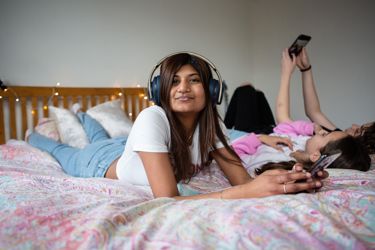
Under 18? We have resources for you on wellbeing, self-esteem and looking after yourself
What to Expect in Your 50s

Medically Reviewed by Carol DerSarkissian, MD on February 22, 2023 Written by Stephanie Booth
Brain Health
1/13
You’ll go into your 50s with more brain function than you had when you were 25. While it may dip a little around age 55, don’t dwell on that. Some experts believe that thinking you’ll mentally slow down as you age may make it so. One way to help preserve your brain power (and memory) is to follow a Mediterranean diet that’s rich in fruits, veggies, whole grains, and healthy fats like olive and canola oils.
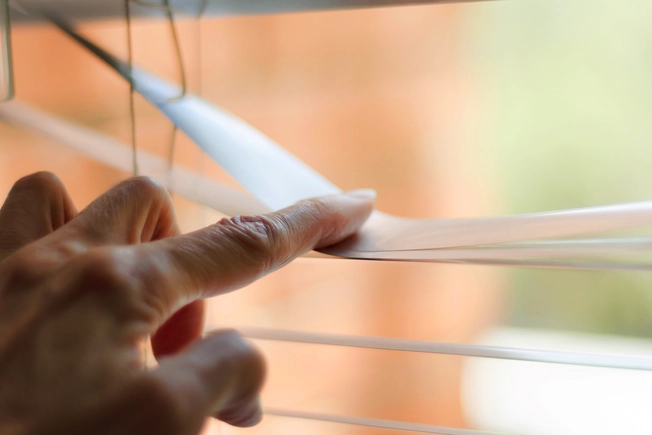
Mental Health
2/13
Nearly 95% of people who are 50 or older say they’re “satisfied” or “very satisfied” with their lives. But in women, the hormone shift of menopause can cause changes in mood. And illness and heavy alcohol use can make you more likely to be depressed. A simple strategy to boost your mood: Sit less and move more. Your chances of mental health issues are higher if you sit more than 7 hours a day or don’t exercise.
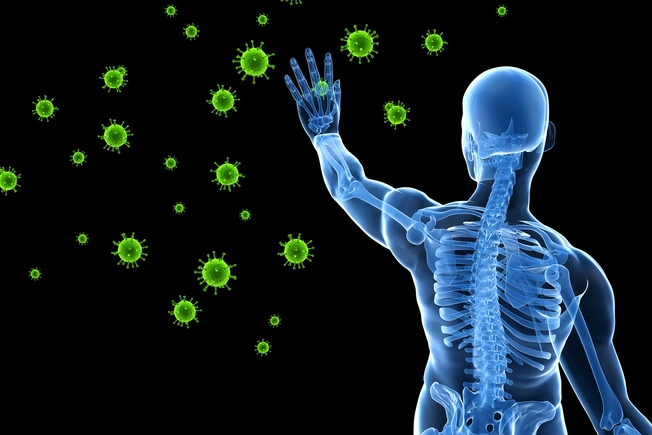
Immune System
3/13
This can be slower to go after viruses and other outside threats. It’s also more likely to attack itself by accident. And your body no longer makes as many “fighter” cells to destroy infections as it used to. Because of all this, you’re more likely to get sick with the flu, pneumonia, or tetanus, so make sure you’re up to date on your vaccines.
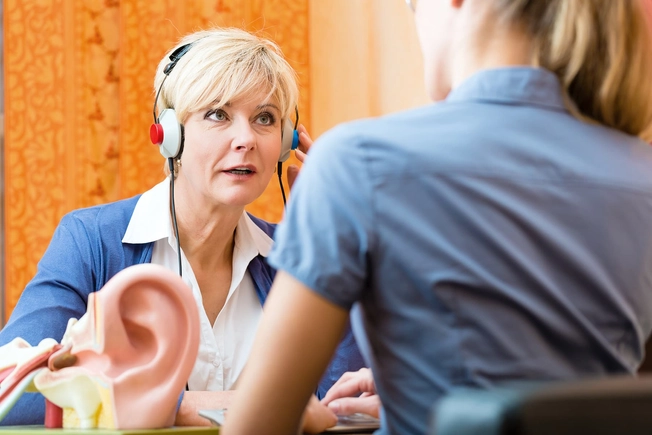
Hearing
4/13
Up to 40% of people over the age of 50 have some hearing loss. Aside from natural aging, your genes can play a part, and some health issues -- like high blood pressure, heart problems, and diabetes -- can affect your hearing over time. If you have concerns, ask your doctor about a hearing test. People who don’t hear well are more likely to cut themselves off from loved ones and be depressed
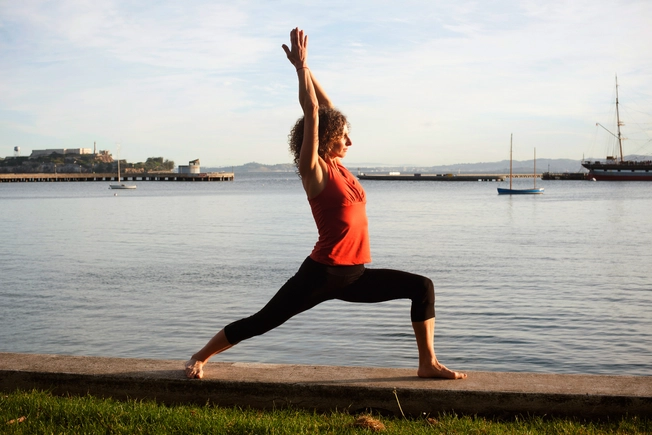
Bones
5/13
When you’re younger, your body swaps out worn-down bone cells with new, strong ones. By the time you’re in your 50s, you have more broken-down bone cells than can be replaced. This means your bones naturally get weaker. To protect them, eat foods that are high in calcium and vitamin D. Weight-bearing and resistance exercises like hiking and lifting weights can also help your bones stay strong.
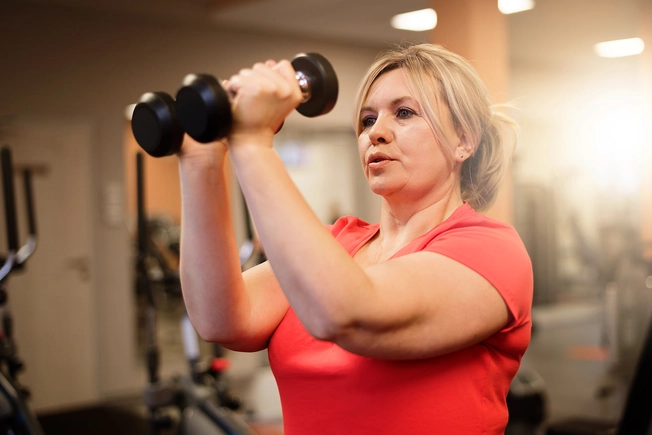
Muscle
6/13
After you turn 50, you start to lose muscle at a faster rate. Your physical strength can get weaker, too. The best way to stop this slide is to lift weights or do strength training exercises like lunges and squats 2 to 3 times a week. Not only will you build more lean muscle mass, but you’ll also improve your sense of balance, which will come in handy as you get older
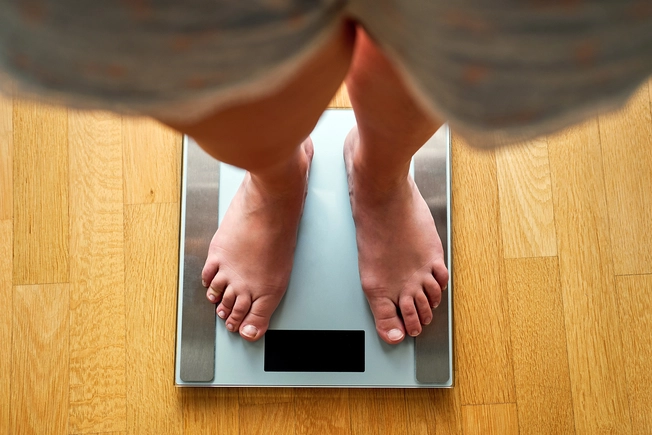
Joints
7/13
The tissue and cartilage that cushion your joints begin to thin over time, and you’ll feel the effects of this in your 50s. (Men may notice it sooner.) To stave off joint pain and arthritis, start with your posture. When you slouch, you put pressure on your joints. And keep an eye on your weight, since extra pounds can put pressure on your joints. Also, drink lots of water. When you’re thirsty, your body pulls fluid from joint tissue
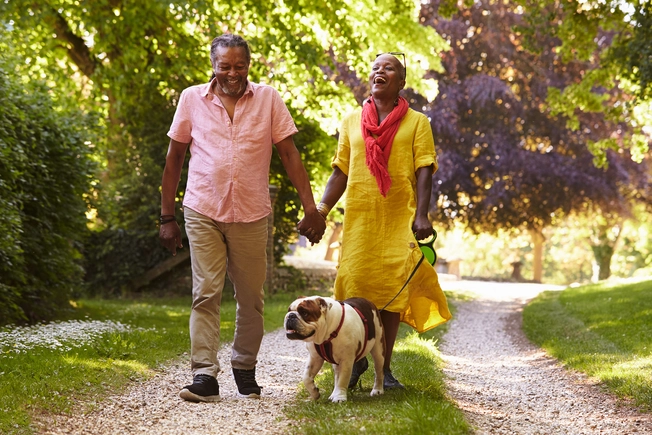
Heart
8/13
Once you hit your 50s, your chances of a heart attack go up. Exercise can help keep your heart and blood vessels healthy -- aim for at least 30 minutes of activity most days. (Even short walks count.) Try to keep your weight and blood pressure within a normal range, too, and if you haven’t stopped smoking, now’s the perfect time. Cigarette smoke is a major cause of heart disease
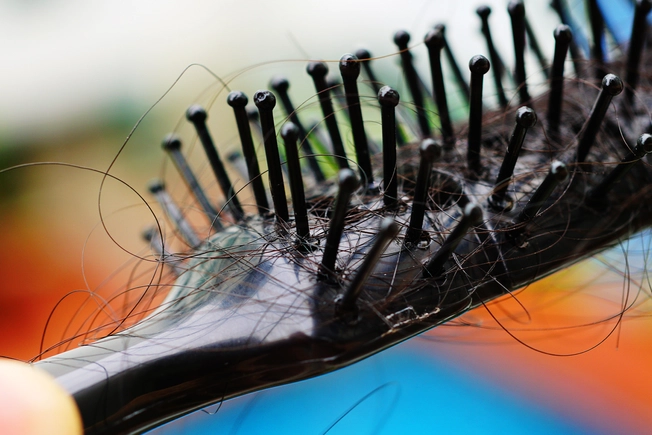
Hair
9/13
Around the time you turn 50, your hair can start to thin and recede, especially for men. It probably will also be turning gray, depending on your ethnic group and your family history. It’s common to feel self-conscious about how “old” your hair looks, but you can color it. You also might talk with your doctor about medicines or hair transplant surgery
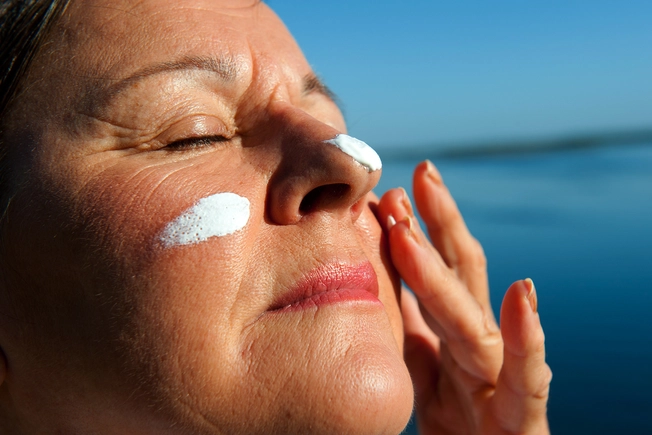
Skin
10/13
Any sun damage you had as a carefree kid will now reveal itself. You may see age spots and will need to watch for signs of skin cancer. If you didn’t protect your skin when you were younger, it's not too late to start. Wear sunscreen of at least 30 SPF every day, and have a skin cancer check each year. Your skin will probably also feel drier and be easily irritated. An unscented moisturizer (not lotion) can help
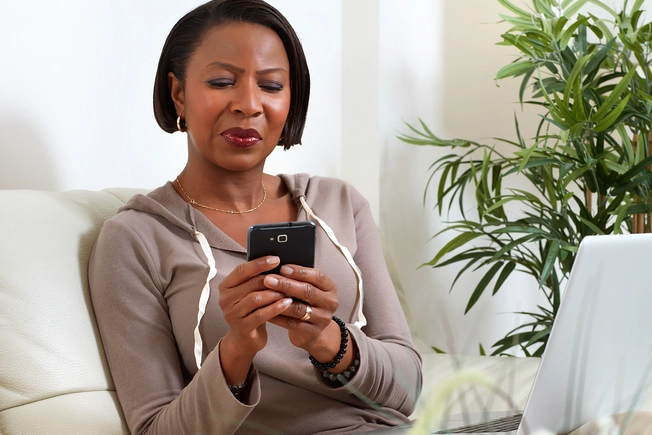
Vision
11/13
If you have to squint when you read your phone, that’s because the lenses inside your eyes get stiffer with age. They can no longer quickly switch from a faraway focus to an up-close view. Glasses (like “readers” you buy without a prescription) may help, or you might need a new vision prescription. The older you get, the more your sight will change, so make sure to get regular eye exams.
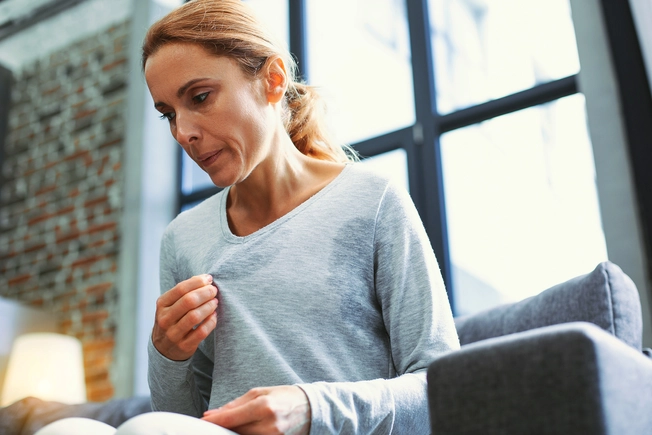
Menopause
12/13
The average age a woman’s periods stop for good is 51. As your hormones drop, you might notice things like dry skin, hot flashes, and mood swings. Because the lining of your vagina gets thinner and drier, sex could also be painful. If so, talk to your doctor. Plenty of treatments, from antidepressants to hormone therapy, can help. So can lifestyle changes like getting enough sleep and using lubricant during sex.
https://www.webmd.com/healthy-aging/ss/slideshow-what-to-expect-in-your-50s
WHAT MAKES HEALING HOLIDAYS UNIQUE
Impartial Advice
We are an unbiased filter and never
accept payment to be featured on
our website. We are proud to only
recommend spas that we think are
the best, and that are right for you.
Expert Knowledge
Frances is a true trailblazer, and has
long-standing relationships with the
world's top spa and wellness experts.
Our team has personally visited
every single spa on our books.
Proven Value
Being the market leader allows us to
negotiate the best rates and the
lowest air fares. We will, quite simply,
never be beaten on price.
Award-Winning
We are extremely proud to have won the World’s Best Spa & Wellness Tour Operator, as well as the UK’s Favourite Specialist Tour Operator, high praise indeed. READ MORERETREAT TYPESOLO TRAVELLERSAYURVEDAHEALTH AND FITNESSBETTER AGEINGSPA FOR MENDETOXYOGAWEIGHT-LOSSMEDICAL SPA
The best running shoes for 2024, tested in the lab and on the road
These are the shoes that came out on top in our most recent wear tests, designed for easy runs, racing and more
BY JENNY BOZON AND BEN HOBSONUPDATED: 14 MARCH 2024TESTED BY THE RUNNER'S WORLD EDITORS
Want more tried and tested recommendations from the RW editors? Sign up to our new weekly newsletter Kit Bag, coming soon. Click here to subscribe.
JUMP TO:
- The best running shoes for 2024
- How often do you need to change your running shoes?
- How do I know my foot type for running shoes?
- Daily trainers
- Racing shoes
- Carbon-plated daily trainers
- Speedwork/tempo running shoes
- Stability running shoes
On the hunt for a new (or maybe even your first) pair of running shoes? Well, you've come to the right place. In 2024, footwear is lighter, more comfortable and faster than ever before, leading to PBs on race days, quicker recovery from hard workouts and more joy on easy runs.
But finding the right pair of shoes can be challenging. There are plenty of factors to consider: your unique running style, your weight, the surface(s) you run on, the shape of your feet and your preferred ‘feel’.
To make things easier, we've put together a complete guide to the best running shoes on the market in 2024 below. You'll find shoes for easy runs, long runs and race day, as well as shoes geared towards specific individuals including beginners and overpronators.
Tips for improving your mental wellbeing
There are lots of things we can do to try to take care of our wellbeing. We have tips to help you:
- Try to relax and reduce stress
- Find ways to learn and be creative
- Spend time in nature
- Connect with others
- Look after your physical health
- Try to improve your sleep
It's not always easy to take care of our wellbeing. Or to know where to start. You might find it helpful to:
- Only try what feels comfortable
- Give yourself time to figure out what works for you. Different things work for different people
- Go at your own pace
- Take it step by step. If the first step feels too hard, try to break that up into even smaller steps
Remember that good days for your wellbeing won't always look the same. We don't always have the same levels of energy or motivation. Be kind to yourself and do what feels right for you at the moment.
If you're struggling with these tips or not finding them helpful, we have information on what to try if these tips don't help.
Writing my way through anxiety and depression
It was like having a conversation with myself; working my way through whatever problems were bothering me at the time.
Try to relax and reduce stress
Try to think about what might help you to relax. If there's something that helps you, try to find time to fit it into your day. For example, this could be having a bath or shower. Or going for a walk or listening to music.
Our tips and video below may help you to relax. If you find it difficult to switch off, you could also try some of the tips and exercises in our relaxation pages.
Take a break if you need to
If you're feeling overwhelmed by a stressful situation, try to take a break. A change of scene may help you to relax and relieve feelings of distress, even just for a few minutes.
Do something you enjoy
Try to make time to do an activity you like on a regular basis. This could be cooking a meal, getting in touch with a friend or watching TV.
Try to manage stress
If you're under a lot of pressure, you may start to feel overwhelmed or out of control. Stress can also cause physical effects on our bodies.
See our pages on stress for tips on dealing with pressure and coping with stressful events.
Focus on the present
Paying attention to the present moment or your senses can be helpful. This is sometimes called mindfulness. You can use techniques such as meditation or breathing exercises. Or you can practise mindfulness by paying more attention to your senses while doing things you do each day, for example, while washing up or eating.
It's been shown that focusing on the present can help people become more aware of their thoughts and feelings. This means that instead of being overwhelmed by your feelings, it may become easier to manage them.
Our pages on mindfulness have more information. It may help you decide if it's right for you. And there's some exercises you could try.
Make a self-care kit
It may help to put together some things that could help you when you’re struggling. A self-care kit is filled with things that normally comfort you and help you relax. For example, you could include your favourite book, pictures or photos, a stress ball or fidget toy and a comforting blanket or slippers.
Or you could make a digital self-care kit on your phone. You could save photos, music, videos, messages or sayings that you find helpful. Or notes to remind yourself how to manage difficult situations.
Take care online
There's lots on the internet that may affect our wellbeing. You may find that you're spending more time online than you'd like. Or that it's making your mental health worse. It could help to take breaks from the internet. Or change the accounts you follow or websites you visit. Our pages on looking after your mental health online have more information. This includes tips on getting a good online/offline balance.
We also have tips on coping with distressing events in the news.
Eight relaxation tips for your mental health
Watch our animation for eight relaxation tips to help you look after your mental wellbeing.
Overview
What are heart palpitations?
Heart palpitations are a feeling like your heart is missing heartbeats, racing or pounding. You can feel palpitations in your chest, throat or neck.
Palpitations can happen at any time, even if you’re resting or doing normal activities. Although they may be startling, palpitations usually aren’t serious or harmful. However, they can sometimes be related to an abnormal heart rhythm that needs medical attention.
Who does it affect?
Heart palpitations are more common in women and people assigned female at birth, but anyone can experience them.
People can get heart palpitations at different times in their lives. You can get them as a teenager, during pregnancy or during menopause, for example.
How common are heart palpitations?
Heart palpitations are common. One study found that 16% of people saw their primary care provider because they had palpitations. Also, heart palpitations are one of the most common reasons people visit a cardiologist.
Nyabinghi Rasta Drum Session In The Blue Mountain
Get in contact with our friendly team to discuss our African Dance Workshops. Primary Workshops for Schools offers fun & energetic African Dance Workshops. Show me and I Remember. Tell me and I Forget.
Benefits of African drumming
![[ Hands on djembes, photo by Junior ]](https://www.drummingisfun.co.uk/schools/uh/tn/UH20017-HandsOnDjembes.jpg) It doesn't take scientific research and strenuousexperiments to discover the benefits of drumming. Just watch a group of kids having fun, or join in yourself and feel the effects:
It doesn't take scientific research and strenuousexperiments to discover the benefits of drumming. Just watch a group of kids having fun, or join in yourself and feel the effects:
- Heightened feelings of well-being, rising to elation
- Increased heartrate aids bloodflow and body metabolism
- Physical strength gained by aerobic exercise
- Unity with fellow group members all playing together
- Ease of public-speaking and social situations
- Higher self-esteem
- Finely tuned sense of groove in music
- Ensemble skills
- Intelligence and rhythmic accuracy go hand in hand
- Active listening
- Enhanced sensitivity to acoustic spaces
- Appreciation of musical skill and creativity
Many people, when asked what they really want from life, answer "to be happy", but rarely go out of their way to do much to enhance their well-being. African Drumming, singing, meditation, exercise - these are all things that will benefit your mind, body and soul and nurture the vital sense of happiness that watching TV just doesn't reach. Drumming awakens primal feelings and the joy of this music is infectious to all around. Aside from the physical sensation of deep vibrations pulsing through one's body, the oneness with others in the group creates a glowing expression of unity. Smiles all round!
There is a certain tempo in rhythmic music, about 120bpm to be precise (a brisk walking pace notated as allegro), above which the music starts to accelerate your heart rate. Hence this tempo is used in dance music of all world cultures, to excite the body and encourage listeners to dance. "127 is disco heaven." It usually works on a subconscious level, along with syncopation (offbeat rhythms) and groove, to make your feet itch to get up. This internal exercise enhances the flow of blood around the body which has myriad other positive effects on health, and is particularly beneficial for sick and elderly peoplewho may not be able to exercise much on their own.
Slower music will of course influence the heart to calm down, which is equally useful to de-stress people. We often use a mixture of fast and slow rhythms for variety.
"As you play, the vibration of the drum, which is very strong, is going through your body all the time, and that has quite a dramatic effect. I mean, it's like having a unicellular massage: every cell is being massaged. It's something else!"
- Nana Tsiboe, Ghanaian Master Drummer of Africa
Regular drumming will build muscle strength and also help stamina and agility. A good player needs power but also swift movements that don't tire you out, so the playing can continue effortlessly. Think of it like dancing with your hands. When in Africa, it is usually very hot, and so expending any energy unnecessarily is to be avoided. So drum patterns are designed to be simple and energy-efficient to play quickly.
Of course, when you really get going, you will start sweating and getting tired, but this is good and means you are pushing yourself beyond new boundaries.
When many simple drum patterns mesh together they form a unified energy which is greater than the sum of the individual parts. I think it was Jim who described it by saying that when the patterns all align and sit perfectly together, the rhythm 'zogginates'. This powerfully demonstrates the need for all members of a team to pull together towards a common goal, and it's obvious when it's (not) working. Everyone's role is important for different reasons, and all are necessary to create the full picture. In a previously imbalanced team, this can be an empowering experience for people used to being the underdog, and perhaps a humbling one for management.
Your hands speak through the drum. It is the voice of the soul, a direct connection to our inner being. This is made clear when trying to talk while playing: it's very difficult, as if the same parts of the brain are used to compose speech and to control drumming.
Previously shy, retiring people soon feel wonderfully free once they have a drum in their hands and get used to making it speak. For many people in our reserved, English culture, just the act of making a loud noise has been discouraged for much of their life through repeated social conditioning. So having permission at last to do so can be very liberating and this freedom doesn't rub off. Once you've experienced the joy of drumming, this act of extrovert expression has knock-on effects and makes you feel more at ease in groups of people. Playing solo is very similar to public speaking: quite nerve-racking at first, but easy once you get into it. A drum circle provides an ideal safe place to learn and master these skills: failure (and the resulting laughter) is encouraged to break down fears and build confidence.
It is the eyes of the children which affect me most. Seeing them at first nervous, then joyous when it clicks for them and they realise here is something they can enjoy and succeed at, is very moving. Having something to be proud of is crucial in developing self-esteem, particularly for kids who may be bullied or otherwise taunted for being somehow different, and it allows them to break free of their torment and excel. Drumming is an excellent way to develop self control.
The look on a person's face, when they realise that here is something they can do well, is priceless.
A machine can play music very accurately, but groove is another matter. Just as a comedian's timing is crucial, so the feel of a beat is essential: microscopic shifts of timingcan make something sound just right.
"It don't mean a thing if it ain't got that swing." - bandleader Duke Ellington
Practising playing dead on the beat ("in the pocket") or slightly late or ahead of the beat ("behind/in front of the pocket") will all promote better temporal awareness.
Any musician will benefit from learning the difference between triplet and duplet pulses, as well as syncopation and polyrhythms not often used in classical music, but widespread in popular and non-Western musics.
"...each musician ought to play drums for several years in order to be able to grasp the concepts of groove and rhythm on a purely physical level."
- pioneering electronic music composer Klaus Schulze
Learning ensemble skills is a good springboard to launch/revive your musical life. Who knows where it will lead, and who you will meet...! Many of my students have gone on to play other instruments and sing with other bands.
Researchers at the medical university Karolinska Institutet and Umeå University have now demonstrated a correlation between general intelligence and the ability to tap out a simple regular rhythm. Those who scored highest on intelligence tests also had least variation in the regular rhythm they tapped out in the experiment. Accuracy in timing is important to the brain processes responsible for problem solving and reasoning.
"Intelligence plus character - that is the goal of true education." - Martin Luther King Jr
Being able to listen well is one of the key skills of playing or working in any group, be it a symphony orchestra, a team of engineers discussing a building project or an executive board meeting. Drumming together helps develop the need to listen to many things at once, and not to overplay your own point of view. Like a good chairman, group facilitatorswill soon silence anyone who is hogging the limelight and encourage quieter players to come out of their shell.
Listening carefully to interlocking drum parts will tune the ear to the finer aspects of acoustics in general: how sound is reflected around a room. Playing music or singing in large halls can be very rewarding when one feels truly bathed in the sound that is being created by one's own body. Drumming in forests is enchanting, as one is surrounded by multitudes of echoes off near and distant trees. You will find new enjoyment in tunnels and concrete stairwells...
Once you've tried your hand at drumming, it will give great insight into the art of playing musical instruments in general. You will see more detail in the music you listen to, and be able to pick out different musical lines that show up with active listening. And of course, you will begin to appreciate the frightening level of ability that some virtuoso players have attained.
WHY DOES WEED MAKE YOU LAUGH EASIER?

If you’ve ever shared cannabis amongst a group of friends, you’ve probably experienced some cannabis-induced laughing fits. Marijuana can give you a serious case of the giggles, especially when you’re around friends who also seem to find everything funny. But why, exactly, does cannabis make you laugh? To answer this question, we’re taking a closer look at why we laugh and what science can tell us about how marijuana interacts with laughter.
Why Do People Laugh?
To explain why marijuana makes you laugh, we first need to explain why we laugh in general.
Laughter is actually a very complex process. Neuroscientists have found that laughter involves many different areas of the brain, including the areas that regulate language, memory, logic, motor function, and auditory interpretation. Generally speaking, laughing is a motor reflex, but what causes it is a complicated response to humor, which varies from person to person.
So, many areas of the brain are involved in interpreting humor and, therefore, making you laugh. But MRI brain scans have shown that two parts of the brain are more involved in interpreting humor than the rest of your brain. The frontal and temporal lobes of your cerebral cortex do more heavy lifting when it’s time for your brain to decide whether or not something is funny enough to reflexively laugh at.
Speaking of the frontal and temporal lobes of the cerebral cortex, these two areas of the brain just so happen to get significant stimulation from cannabis use.
Why Does Marijuana Make You Laugh?
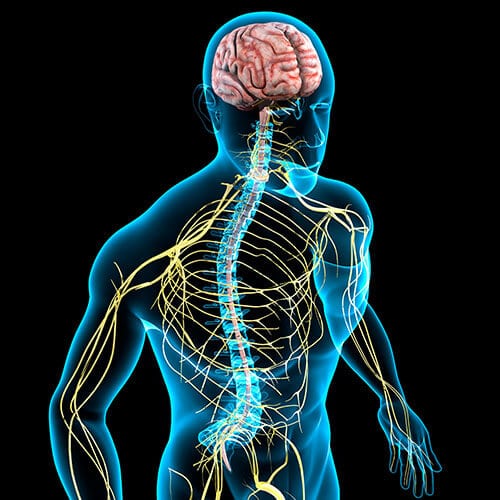 When you use marijuana, the cannabinoids and terpenes from that marijuana start interacting with your endocannabinoid system (ECS). The ECS is a complex nerve signaling system that’s thought to play a role in regulating many bodily systems, including mood, immunity, stress, memory, and pain.
When you use marijuana, the cannabinoids and terpenes from that marijuana start interacting with your endocannabinoid system (ECS). The ECS is a complex nerve signaling system that’s thought to play a role in regulating many bodily systems, including mood, immunity, stress, memory, and pain.
Blood Flow Boost
Because they interact with such a widespread bodily system, cannabinoids can affect the body in many ways. One of these ways is by stimulating blood to the right frontal lobe and the left temporal lobe of your brain, which are the areas of the brain most closely associated with laughter. While more research is needed, some scientists have theorized that the stimulation caused by marijuana makes the brain more sensitive to laughter triggers. Meaning, essentially, it may cause you to laugh more easily.
Euphoria
Another effect of marijuana that may stimulate laughter is euphoria. Euphoria is a scientific term for a feeling of intense pleasure and happiness. Your brain feels a burst of euphoria when you laugh, which is the result of dopamine and serotonin activity. Your brain may also feel euphoria if you’ve consumed tetrahydrocannabinol (THC).
Alongside cannabidiol (CBD), THC is one of the two main cannabinoids in the marijuana plant. CBD is non-psychoactive, while THC is strongly psychoactive. One of the most common psychoactive effects of THC is euphoria.
Marijuana research is still in its infancy, but the current research suggests that THC is very similar in structure to an endocannabinoid called anandamide, which humans produce naturally within the body. Anandamide is a neurotransmitter that plays a major role in how we feel pleasure and process reward signals. THC happens to have almost exactly the same shape as anandamide, so researchers believe it may be able to communicate with endocannabinoid receptors and neurons in a very similar way. And that may be why THC is able to stimulate a sense of euphoria in the brain.
Euphoria itself isn’t the cause of laughter, but it does create great conditions for laughter. When you’re experiencing euphoria, you feel safe, carefree, happy, and stress free. It puts you in a different state of mind, one that’s more open and relaxed, and generally less anxious and depressed. Studies have shown that brains that are experiencing stress or depression actually have less activity in the humor centers of their brain. So, while more research is needed, it’s possible that euphoria may help boost the activity in those parts of the brain, making it easier for you to find something funny and break out into hysterics.
The Pineapple Club invites you to their Valentine's Day Charity Fundraising Event on Thursday 15/2/24 at Anerley Town Hall, Anerley Rd, SE20 8BD. 11- 5.30 pm
Guest Performances by: Johnny Orlando & a Surprise Special Guest!
Music by: DJ Milton Raffle Prizes, Craft Stall, Poetry, and Valentine's Photo Backdrop.
Compare: Cllr Patsy Cummings
Admission Free - Donations Welcome!
Caribbean Lunch served on the day:
Members £7.00 Non-Members £10.00.
Wear Something Red!
3/4
The Pineapple Club is aimed at the retired Afro Caribbean community. They meet weekly at the town hall where they cook up amazing Caribbean food and socialise with their peers.
This long running club is highly regarded, providing a relaxed fun environment for its user group, reducing isolation and loneliness and enabling the formation of new friendships. Approximately 80 people attend this group every week.
Pineapple Luncheon Club Updated Constitution
Click on Link for a Video on Cancer Awareness Within PineappleThe Pineapple Club at Anerley
Copyright © 2026 NONI SOLUTIONS HEALTH CARE DISTRIBUTION - All Rights Reserved.

